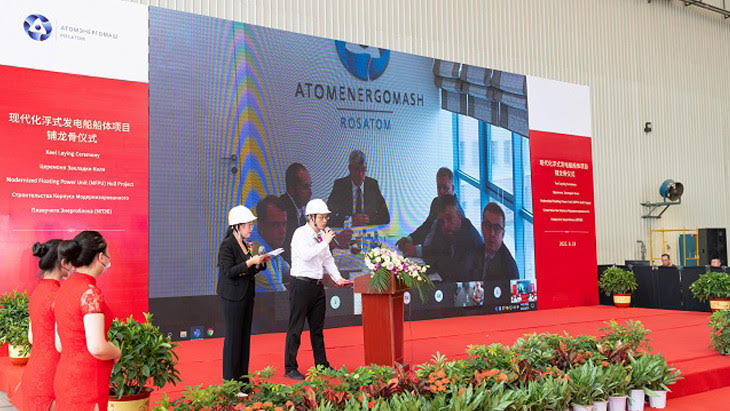The barge will measure 140 metres long and 30 metres wide, said Rosatom, and will feature structures for containment and radioactive waste storage as well as fuel tanks for diesel, according to previous TASS reports. On delivery to Atomenergomash by the end of next year the barge will weigh 9549 tons and when fitted out with two RITM-200S pressurised water reactors and all the equipment it needs to function as a power plant it will weigh some 19,088 tons. The reactor components are already being manufactured.
Atomflot will then take control as the owner and operator of the floating nuclear power plant when it is complete. It will be transferred to Cape Nagloynyn in the Russian Arctic where it will supply 105 MWe to a new port and the forthcoming Baimskaya copper and gold mine. This is scheduled to happen by 2027.
In total, the Baimskaya development requires around 300 MWe, therefore three such floating power plants are needed, while a fourth will be installed as backup for outages during refuelling and maintenance.
Andrey Nikipelov, head of Atomenergomash said: "This project begins the history of a whole family of floating nuclear power plants, different in capacity and purpose - in the Arctic and tropical versions, which Atomenergomash is ready to offer to the market and which undoubtedly have a very serious potential for the implementation of large industrial projects and exports."
Russia already has one floating nuclear power plant, the Akademik Lomonosov, which is stationed at Pevek where it supplies heat and power to the town. This is based on two KLT-40S reactors generating 35 MWe each, which are similar to those used in a previous generation of nuclear powered icebreakers. So-called 'modernised floating nuclear power plants' like the ones for Cape Nagloynyn feature reactors from the new RITM series, as used in the latest generation of icebreakers. RITM units can also be used on land and a single-reactor plant is planned for Ust-Kuyga in Russia's far east.
No specific name was given to the new barge, and the overall project comprising four floating power plants and eight reactors is known simply as Cape Nagloynyn. Rosatom announced the ceremony without specifying exactly which shipyard was doing the work, but in November last year it was reported by TASS to be Wison Heavy Industries, a specialist in large offshore platforms with a manufacturing base in Nantong.





_18570.jpg)
_16159.jpg)
_49205.jpg)
_18938.jpg)





